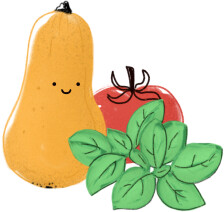Ziergräser - Federgras Standardsorte

Variety
Ziergräser - Federgras Standardsorte
created by Alex&Sempi at 22.02.2025
Features
Growth habit
lifespan: perennial
ornamental plant
self-seeding
root type: deep-rooted
Location
planting: outdoor
Soil: permeable soil
soil moisture: no waterlogging
Fertilization: nutrient-poor
fertilization: minimal
Soil: light
Soil: gravelly to sandy
Soil: sandy
Water: sparingly
pH value: neutral to alkaline (7-8)
Planting: rock garden / alpine garden
Resistances
Winter hardy
Season Overview
Sowing
Harvest
J
F
M
A
M
J
J
A
S
O
N
D
Description
Appearance and growth Feather grass usually forms dense, roundish clumps. The leaves are very thin, usually hairy on the underside and tend to curl up in dry conditions. The most striking features are the fine flower panicles and the awns hanging from the flowers, which gently sway back and forth at the slightest breeze. The feather grass flowers between July and September. Depending on the species and variety, the flower color varies between white, silvery and yellowish. One of the smallest species is the feather grass (Stipa pennata), which grows to a height of 25 to 50 centimetres. The giant feather grass (Stipa gigantea), on the other hand, reaches a height of up to 200 centimetres, and the variety 'Goldfontäne', which was bred by the well-known perennial gardener Ernst Pagels, even reaches up to 250 centimetres. Although feather grass is a perennial grass, some species are quite short-lived. Many species survive in the garden by self-seeding, while others, such as the heron feather grass, have to be sown again.
F1 Hybrid
Not frost resistant
Growing tips
Location and soil
Details
Light requirement
Sunny
Water requirement
Dry
Soil
Light (sandy)
Nutrient requirement
Low
Light germinator
Germination temperature
15 - 20 °C (Degrees Celsius)
Plant distance
30 cm
Row spacing
30 cm
Seeding depth
0.2 cm
Companion Plants
Antagonistic Plants
Diseases
Root Rot
Pests
Spider mites
Aphids